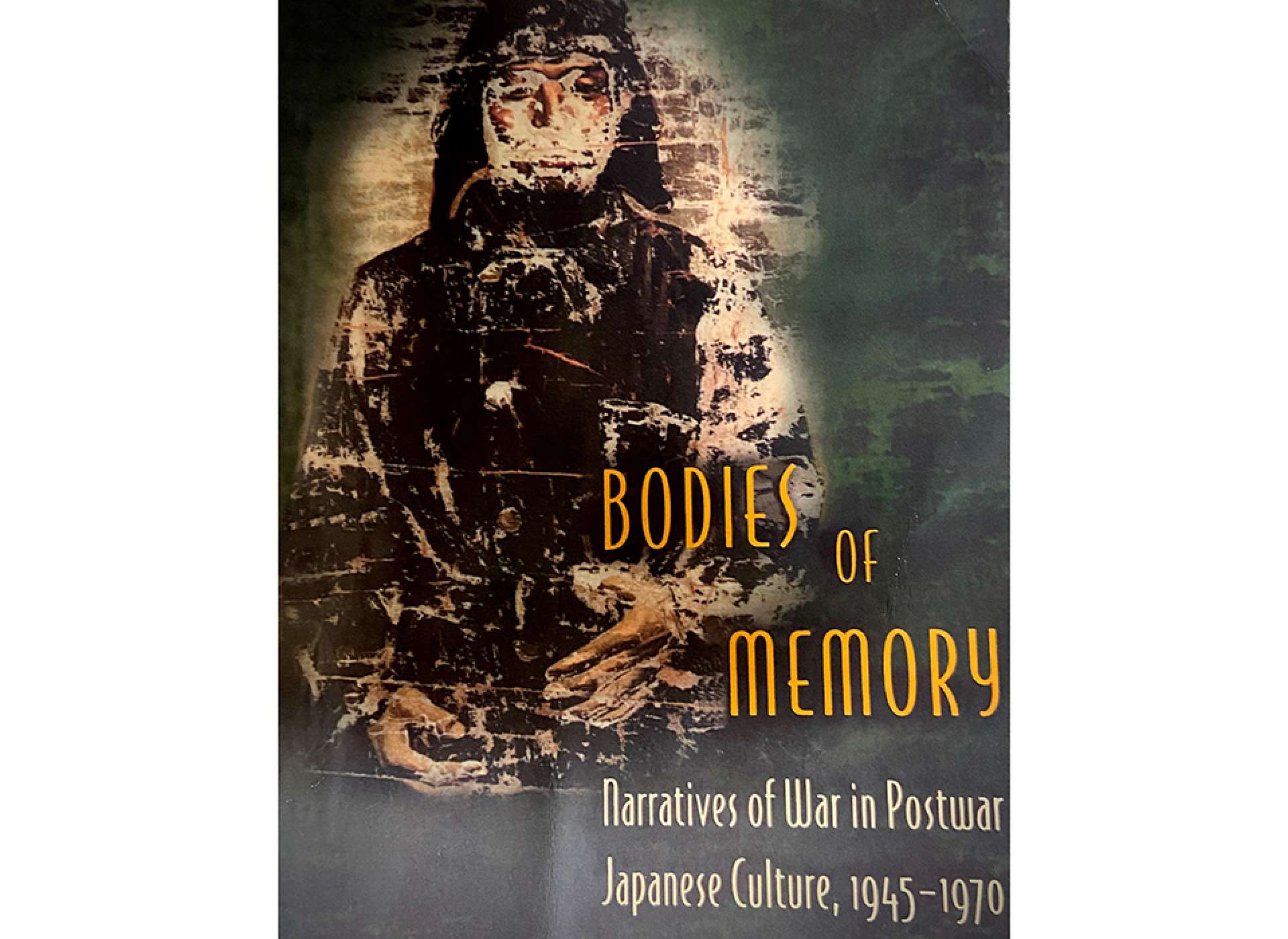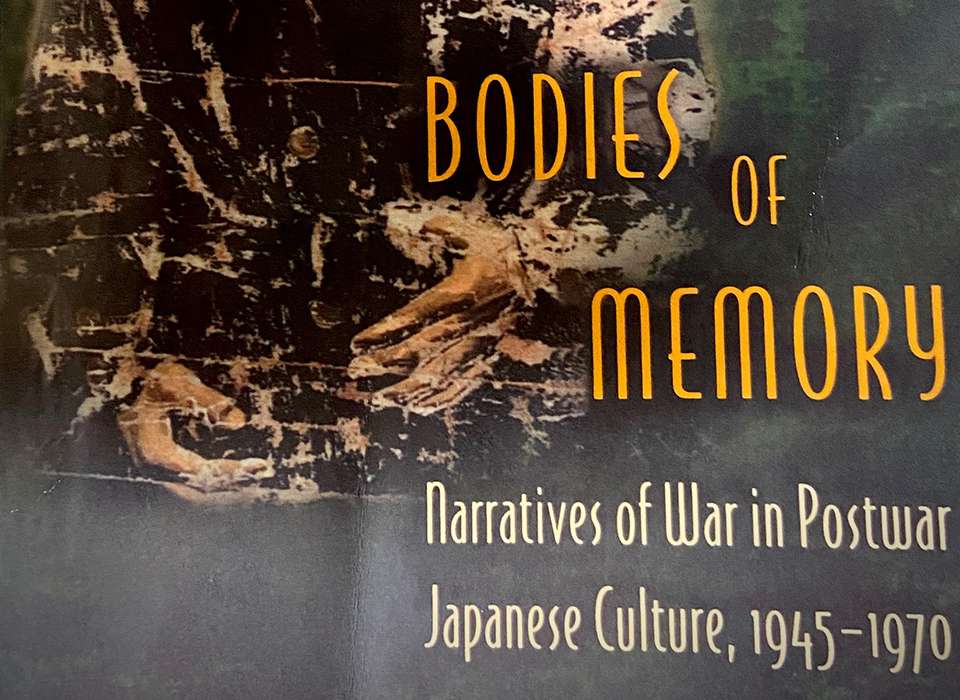In his book, Bodies of Memory: Narratives of War in Postwar Japanese Culture, 1945-1970, Yoshikuni Igarashi examines the impact of World War II and Japan’s defeat on postwar society by analyzing narrative strategies employed by the Japanese to render its traumatic experiences of the war comprehensible.
Igarashi, a Professor of History at Vanderbilt University, looks at how memories of war have been suppressed and expressed as well as the tensions between the desire to remember and the desire to forget in the first 25 years after Japan’s defeat. Using a variety of popular culture sources such as radio, television, film, literature, mass media, and sports, Igarashi successfully argues that prominent Japanese figures and popular characters helped shape Japan’s national image during this period of socioeconomic recovery.
After the war ended, Japanese society struggled to comprehend wartime losses and the resulting national trauma. Japan’s defeat was a national event:
“as a nation, it could no longer exist as it had, and its members were forced to reconsider its very foundation.”
Yoshikuni Igarashi
Japan and the United States, however, quickly became close allies due to the postwar interests of both countries. In order “to render understandable the experiences of the atomic bomb and the ensuring transformation of their relationship,” Japan and the United States both suppressed the very deep enmity that defined their political relations up to that point. In the process, loss was transferred through narrative representations into sacrifices needed for Japan’s future betterment—a precondition for postwar peace and prosperity under US tutelage.
Igarashi calls this memory of the war the “foundational narrative,” which eventually became the predominant account of the war among top government officials. By removing memories of war loss, national trauma, and past hostilities with the United States, the “foundational narrative” provided a way for Japanese postwar leadership to “explain away the tension created by its acceptance of defeat” while managing “to cloak Japan’s defeat in the guise of strategic necessary and concern for humanity at large.” Any memory of World War II that was incongruous with the political necessity of the Cold War, Igarashi aruges, was soon repressed in both Japan and the United States.
Igarashi rejects “foundational narrative” and the idea that there was an abrupt and immediate interruption in the historical timeline in which Japan transformed from a nationalist empire into a democratic nation-state. Igarashi argues against this historical construction, maintaining that in reality many ordinary Japanese grappled with complicated memories of World War II for much longer than the official accounts tend to portray. Instead, the Japanese nation worked hard to rebuild its social structure, regain national pride, and overcome political subordination to its former enemy—the United States. Japan survived the war’s loss and subsequent destruction in part through a popular culture that allowed memories of defeat and devastation to be expressed more willingly than political discourse permitted.

Cover of Bodies of Memory: Narratives of War in Postwar Japanese Culture, 1945-1950.
To explore the tensions between remembering and forgetting in postwar Japanese society, Igarashi focuses on “the body as the central site for Japan’s production of the past.” After an introductory chapter examining the role the atomic bomb and Emperor Hirohito played in the establishment of the “foundational narrative,” the book is divided into five subsequent chapters, each giving an example of how popular culture countered the Japanese government’s political narratives of World War II.
Prominent examples include Tajir Tamura’s popular novel, The Gateway of Flesh as a way to illustrate how woman struggled for survival in the postwar period and the dramatizations of Rikidōzan’s victory over American wrestlers, which symbolized Japan overcoming the loss inflicted by the United States during the war. The popular radio show Kimi no nawa (Your name is…?), which portrayed two protagonists who repeatedly have missed encounters with the past, provided a forum to express feelings of regret. Interestingly, Igarashi uses the 1964 Olympics to show how “the spectacular sports event” reconfigured memories of the war through the display of athletic bodies and pristine Japanese cityscapes, both of which signified the rebirth of Japanese society.
The 1954 film, Godzilla, is one of the most famous pop-culture examples employed by Igarashi. The end of American occupation caused memories of the war to resurface in popular consciousness, which were made visual through mass media. The monstrous body of Godzilla, according to Igarashi, stood for the memories of war and loss that had been repressed by the resurgent Japanese nationalism of the 1950s. For example, Godzilla is awakened from its sleep by an American nuclear test, serving as a “symbolic manifestation of the United States that had posed a nuclear threat to Japan.”
Throughout the film, Japan’s Self Defense Forces alone battle Godzilla, even though Japan was increasingly dependent on US military forces in the postwar period, demonstrating the tensions present in post-WWII Japanese memory. As a result, Godzilla “rejects the foundational narrative by destroying postwar recovery,” offering a counternarrative to audiences still struggling to reconcile with the past.
Bodies of Memory contributes to the growing scholarship on history and memory as it seriously considers the postwar practices of memory in Japan. While the method of focusing on “bodies” can at times be confusing, the overall use of popular Japanese figures and fictional characters provides an interesting look into postwar Japanese popular culture.
Moreover, throughout his study, Igarashi demonstrates that remembering is an ongoing, productive act, and forgetting is just one aspect of this process. Readers interested in history and cultural studies will find the book a well-argued analysis that contributes to the ongoing historiography of postwar memory.
Jennifer Popowycz, PhD
Jennifer Popowycz, PhD is the Leventhal Research Fellow at The National WWII Museum. Her research focuses on the Eastern Front and Nazi occupation policies in Eastern Europe in World War II.
Cite this article:
MLA Citation:
APA Citation:
Chicago Style Citation:







![Max Fuchs, New York City cantor, sings as Rabbi Sydney [sic] Lefkowitz, Richmond, VA, conducts the first Jewish services from Germany.](/sites/default/files/styles/max_650x650/public/2025-10/image1.jpg)

